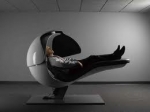What is a good AHI number?
- Chuck Connors
- Posts: 257
- Joined: Fri Apr 20, 2012 7:55 am
What is a good AHI number?
I have a Resmed S9 machine and have had it for some time. The 1st two technicians at the DME provider in Seattle were incompetent in showing me how to use the machine and to be able to set the readings on the machine. Finally, a "real nurse" showed me how to display the AHI and other settings. I didn't know what AHI stood for until yesterday.
I'm interested in learning from the experience of others on what a good AHI number is. I'm sure the ideal number would be less than 1, but I'm interested in some feedback.
Thank you.
Chuck
I'm interested in learning from the experience of others on what a good AHI number is. I'm sure the ideal number would be less than 1, but I'm interested in some feedback.
Thank you.
Chuck
Re: What is a good AHI number?
The usual definition of effective treatment is that your AHI is consistently below 5.0 all the time.
No one is going to get an AHI = 0.0 night after night. Many people are not even going to consistently see the AHI < 1.0 night after night. Most people tend to feel best when their AHI < 2, but for some people, the effort to reduce the AHI from the 3-4 range to less than 2 is so tedious and uncomfortable that it interferes with their ability to sleep well with the machine.
So---once the AHI is consistently below 5, start working on addressing "How do you feel?" If you feel really good and the AHI is below 5, you don't need to worry too much about getting it lower. If your AHI is between 3 and 5 and you feel "Ok", you might feel better with an AHI that's below 2.
No one is going to get an AHI = 0.0 night after night. Many people are not even going to consistently see the AHI < 1.0 night after night. Most people tend to feel best when their AHI < 2, but for some people, the effort to reduce the AHI from the 3-4 range to less than 2 is so tedious and uncomfortable that it interferes with their ability to sleep well with the machine.
So---once the AHI is consistently below 5, start working on addressing "How do you feel?" If you feel really good and the AHI is below 5, you don't need to worry too much about getting it lower. If your AHI is between 3 and 5 and you feel "Ok", you might feel better with an AHI that's below 2.
_________________
| Machine: DreamStation BiPAP® Auto Machine |
| Mask: Swift™ FX Nasal Pillow CPAP Mask with Headgear |
| Additional Comments: PR System DreamStation and Humidifier. Max IPAP = 9, Min EPAP=4, Rise time setting = 3, minPS = 3, maxPS=5 |
- Sheriff Buford
- Posts: 4111
- Joined: Mon Aug 09, 2010 8:01 am
- Location: Kingwood, Texas
Re: What is a good AHI number?
The pundants say a 5.0 or less is better. A 3.0 is good... and below a 3.0 is real good. If you pm me, I'll send you the clinical manual. It has all the real good stuff (settings, screens, etc...).
Sheriff
Sheriff
_________________
| Machine: AirSense 11 Autoset |
| Mask: Mirage Quattro™ Full Face CPAP Mask with Headgear |
Re: What is a good AHI number?
Anything less than 5 is considered good. It depends on how you feel. What AHI are you achieving? How do you feel? The quest for the lowest AHI you can achieve is normal, but don't forget to take into account how you feel. If the AHI is under five how you feel is the best indicator of success. Good luck. Get used to the machine, give yourself time to adjust and then you can start tweaking to lower your AHI if you need to. Good luck Chuck. I believe the most important thing in achieving the best therapy is using the machine 100% of sleep time, then tweaking if necessary. To really learn about your machine apneaboard has the clinicians manuals, but study your users manual, too. You'll be surprised at what you can learn. Also the manufacturers web site is a source of information.
_________________
| Mask: Wisp Nasal CPAP Mask with Headgear - Fit Pack |
| Additional Comments: PR System One Remstar BiPap Auto AS Advanced. |
Dog is my copilot
- Sheriff Buford
- Posts: 4111
- Joined: Mon Aug 09, 2010 8:01 am
- Location: Kingwood, Texas
Re: What is a good AHI number?
I average AHI of .2 - .3 cm H2O every night. About 2 or 3 times a month, I'l get 0 cm H2O AHI, and I don't feel as good as a .2 or .3 or higher. Wierd.... but that's the way it is for me....robysue wrote:So---once the AHI is consistently below 5, start working on addressing "How do you feel?" If you feel really good and the AHI is below 5, you don't need to worry too much about getting it lower. If your AHI is between 3 and 5 and you feel "Ok", you might feel better with an AHI that's below 2.
Sheriff
_________________
| Machine: AirSense 11 Autoset |
| Mask: Mirage Quattro™ Full Face CPAP Mask with Headgear |
- torontoCPAPguy
- Posts: 1015
- Joined: Mon Dec 28, 2009 11:27 am
- Location: Toronto Ontario/Buffalo NY
Re: What is a good AHI number?
I regularly have AHI=0
_________________
| Mask: Mirage Quattro™ Full Face CPAP Mask with Headgear |
| Humidifier: S9™ Series H5i™ Heated Humidifier with Climate Control |
| Additional Comments: Respironics Everflo Q infusing O2 into APAP line to maintain 95% SaO2; MaxTec Maxflo2 Oxygen Analyzer; Contec CMS50E Recording Pulse Oxymeter |
Re: What is a good AHI number?
Outliers exist. And on AHI you're an outlier. A lucky outlier that incites the green eyed monster in many of us, but an outlier nonetheless.Sheriff Buford wrote:I average AHI of .2 - .3 cm H2O every night. About 2 or 3 times a month, I'l get 0 cm H2O AHI, and I don't feel as good as a .2 or .3 or higher. Wierd.... but that's the way it is for me....robysue wrote:So---once the AHI is consistently below 5, start working on addressing "How do you feel?" If you feel really good and the AHI is below 5, you don't need to worry too much about getting it lower. If your AHI is between 3 and 5 and you feel "Ok", you might feel better with an AHI that's below 2.
Sheriff
For many of us, the work involved in getting the AHI to stay below 1 night after night can and does interfere with other aspects of our sleep.
Take me, for example: If my stomach could tolerate my original titrated pressure of 9cm, I'd have the same kind of AHI numbers that you do. But---I'd also wake up with a basketball sized stomach full of pain multiple times through the night, which is not exactly conducive to waking up feeling rested or refreshed in the morning.
In my case I can now finally get to sleep and wake up feeling rested and refreshed (most mornings) if I use a bit less pressure (max IPAP = 8, min EPAP = 4) and tolerate an AHI that typically ranges between 1.0 and 2.5.
_________________
| Machine: DreamStation BiPAP® Auto Machine |
| Mask: Swift™ FX Nasal Pillow CPAP Mask with Headgear |
| Additional Comments: PR System DreamStation and Humidifier. Max IPAP = 9, Min EPAP=4, Rise time setting = 3, minPS = 3, maxPS=5 |
- chunkyfrog
- Posts: 34545
- Joined: Mon Jul 12, 2010 5:10 pm
- Location: Nowhere special--this year in particular.
Re: What is a good AHI number?
Most of the time, I'm below 2.
I feel the same with any number from 0-2; and even had a night with over 6, and I still felt pretty good.
Of course, that was with a brand new mask that leaked like the bottom of a rabbit hutch--it went back.
I feel the same with any number from 0-2; and even had a night with over 6, and I still felt pretty good.
Of course, that was with a brand new mask that leaked like the bottom of a rabbit hutch--it went back.
_________________
| Mask: AirFit™ P10 For Her Nasal Pillow CPAP Mask with Headgear |
| Additional Comments: Airsense 10 Autoset for Her |
Re: What is a good AHI number?
Chuck, In my opinion there are a few fanatics on this board who advise posters to reduce their AHI to below 5 regardless of their underlying medical condition or the kind of XPAP, mask, etc., that they are using. From my 15 months of CPAPing I have testimonial evidence from my own experience that the AHI is a useless measure of sleep disorders as Dr. Colin Sullivan, the inventor of the CPAP, reports in the article mentioned in my signature line.
I can post here average results for a three months period from a year ago showing AHI of above 15 and another more recent 3 months period showing an average AHI of below 3. Done on same XPAP at same setting. The difference is in the mask which is currently a nasal mask Resmed Mirage Softgel and a chinstrap, vs full face mask F&P Flexifit #431 & #432 in the past. The leak in nasal mask is dramatically reduced from the full face mask. I also attribute the improvement in my AHI and more importantly the AI to the S9 Autoset machine which is very sensitive to false hypopneas and leaks above 24 L/min. In the APAP mode it does exactly what Dr Michael Berthon Jones, its chief designer, said (see below if I find it).
As to my feelings it is somewhat improved with regards to the Residual Daytime Sleepiness.
From an interview with Dr Berthon Jones in 2002
Why is it important for an automatic CPAPdevice
to respond to flow limitation, snore and apnea?
The characteristic flattening of the flow-time
curve caused by flow limitation is the very best
signal for fine-tuning the pressure, once you have
eliminated apneas and snoring. But if you are just
falling asleep, you can go very quickly from having
a totally open airway to snoring very loudly, in a way
that produces somewhat chaotic or messy flowtime
curves, without seeing the characteristic
flattening. So the best approach is to respond very
quickly to loud snoring, and then fine tune using
flattening. Rarely, you can go straight from awake
and unobstructed to asleep and apneic, and so it
can be useful to increase pressure in response to
apnea as well. However, actual apnea is pretty rare
on AutoSet, because in most cases the responses
to snoring and flattening get the pressure up
quickly enough to prevent apneas.
Why doesn’t ResMed's AutoSet respond to
hypopnoea?
When you are lying quietly awake, or when you
first go to sleep, or when you are dreaming, you
can have hypopneas (reductions in the depth of
breathing) which are nothing to do with the state of
the airway. For example if you sigh, which you do
every few minutes, you usually have a hypopnea
immediately afterwards. This can also happen if
you have just rolled over and are getting settled, or
if you are dreaming. And the annoying thing is that
when you are on CPAP, this tendency to have what
are called central hypopneas - hypopneas that are
nothing to do with the state of the airway - is
increased. If you make an automatic CPAP device
that responds to hypopneas, you will put the
pressure up to the maximum while the patient is
awake.
Do you think there is a misconception clinically
that all hypopneas should be treated ?
For simple obstructive sleep apnea, central
hypopneas should not be treated. They are not a
disease. Everyone has them. And they don’t go
away with CPAP.
There is a rare and important exception: central
hypopneas due to heart disease. This is called
Cheyne-Stokes breathing. CPAP does help with
that.
Why doesn’t ResMed's AutoSet respond to
apnea above 10 cmH2O in pressure?
I mentioned before that the higher the pressure,
the more central hypopneas you will have. At a
pressure somewhere around 10 cmH2O, the central
hypopneas become central apneas. On the other
hand, the vast majority of obstructive apneas are
already well controlled by 10 cmH2O, and we are
only fine tuning using snoring and flattening. So it
is a pretty good bet that if the pressure is already
above 10 cmH2O, any apneas are most likely
central, and you should leave them alone (except
in patients with central apneas due to heart failure).
But if the pressure is below 10 cmH2O, most
apneas will be obstructive and you should put the
pressure up. There’s nothing magical about 10
cmH2O, it’s just a good place to put the line in the
sand.
Can you over-treat apnea?
You can’t over-treat obstructive apnea. You
really don’t want the patient having unresolved
obstructive apneas. And we want not just to prevent
apnea - we also want to keep the airway sufficiently
open for the subject to breathe easily and regularly
and stay asleep.
But you can use too much pressure. The higher
the pressure, the greater the side effects. Although
this has never been proven, it is rather obvious - no
pressure, no side effects! So you want to use the
lowest pressure possible while keeping the airway
nicely open.
Likewise can a device that responds to
hypopnea over-treat it ?
The funny thing is that it can both over-treat and
under-treat. It will put the pressure up through the
roof in some subjects, who have lots of central
hypopneas. And it can completely miss repetitive
severe silent inspiratory flow limitation that is totally
disturbing the patient’s sleep without there being
any hypopneas. If this occurs without CPAP, it is
called upper airway resistance syndrome. It is just
as bad for you as obstructive sleep apnea. But a
CPAP machine that responds only to hypopneas
will treat your obstructive sleep apnea, and give
you upper airway resistance syndrome instead.
How can Automatic CPAP devices help
optimise treatment ?
CPAP devices, whether automatic or not, can
tell us - the clinician, the technician - about what is
going on when we are not there. Is the patient using
the device? Is there a leak, and if so, when and how
much? If it is an automatic device, what is the
pressure doing? How well is the patient breathing?
How steadily, how much? This might be particularly
important if the patient also has heart disease or
lung disease, or has had a stroke, and has other
reasons, apart from sleep apnea, for having
abnormal breathing during sleep.
Notice: if any poster feels like saying that the above was said in 2002
and since then a lot of water came down the Mississippi, I can post
Dr Berthon Jones's application for a patent covering the S9 Autoset
(using the FOT technology) from 1994!
So, Dr Michael new what he was saying
in 2002.
I can post here average results for a three months period from a year ago showing AHI of above 15 and another more recent 3 months period showing an average AHI of below 3. Done on same XPAP at same setting. The difference is in the mask which is currently a nasal mask Resmed Mirage Softgel and a chinstrap, vs full face mask F&P Flexifit #431 & #432 in the past. The leak in nasal mask is dramatically reduced from the full face mask. I also attribute the improvement in my AHI and more importantly the AI to the S9 Autoset machine which is very sensitive to false hypopneas and leaks above 24 L/min. In the APAP mode it does exactly what Dr Michael Berthon Jones, its chief designer, said (see below if I find it).
As to my feelings it is somewhat improved with regards to the Residual Daytime Sleepiness.
From an interview with Dr Berthon Jones in 2002
Why is it important for an automatic CPAPdevice
to respond to flow limitation, snore and apnea?
The characteristic flattening of the flow-time
curve caused by flow limitation is the very best
signal for fine-tuning the pressure, once you have
eliminated apneas and snoring. But if you are just
falling asleep, you can go very quickly from having
a totally open airway to snoring very loudly, in a way
that produces somewhat chaotic or messy flowtime
curves, without seeing the characteristic
flattening. So the best approach is to respond very
quickly to loud snoring, and then fine tune using
flattening. Rarely, you can go straight from awake
and unobstructed to asleep and apneic, and so it
can be useful to increase pressure in response to
apnea as well. However, actual apnea is pretty rare
on AutoSet, because in most cases the responses
to snoring and flattening get the pressure up
quickly enough to prevent apneas.
Why doesn’t ResMed's AutoSet respond to
hypopnoea?
When you are lying quietly awake, or when you
first go to sleep, or when you are dreaming, you
can have hypopneas (reductions in the depth of
breathing) which are nothing to do with the state of
the airway. For example if you sigh, which you do
every few minutes, you usually have a hypopnea
immediately afterwards. This can also happen if
you have just rolled over and are getting settled, or
if you are dreaming. And the annoying thing is that
when you are on CPAP, this tendency to have what
are called central hypopneas - hypopneas that are
nothing to do with the state of the airway - is
increased. If you make an automatic CPAP device
that responds to hypopneas, you will put the
pressure up to the maximum while the patient is
awake.
Do you think there is a misconception clinically
that all hypopneas should be treated ?
For simple obstructive sleep apnea, central
hypopneas should not be treated. They are not a
disease. Everyone has them. And they don’t go
away with CPAP.
There is a rare and important exception: central
hypopneas due to heart disease. This is called
Cheyne-Stokes breathing. CPAP does help with
that.
Why doesn’t ResMed's AutoSet respond to
apnea above 10 cmH2O in pressure?
I mentioned before that the higher the pressure,
the more central hypopneas you will have. At a
pressure somewhere around 10 cmH2O, the central
hypopneas become central apneas. On the other
hand, the vast majority of obstructive apneas are
already well controlled by 10 cmH2O, and we are
only fine tuning using snoring and flattening. So it
is a pretty good bet that if the pressure is already
above 10 cmH2O, any apneas are most likely
central, and you should leave them alone (except
in patients with central apneas due to heart failure).
But if the pressure is below 10 cmH2O, most
apneas will be obstructive and you should put the
pressure up. There’s nothing magical about 10
cmH2O, it’s just a good place to put the line in the
sand.
Can you over-treat apnea?
You can’t over-treat obstructive apnea. You
really don’t want the patient having unresolved
obstructive apneas. And we want not just to prevent
apnea - we also want to keep the airway sufficiently
open for the subject to breathe easily and regularly
and stay asleep.
But you can use too much pressure. The higher
the pressure, the greater the side effects. Although
this has never been proven, it is rather obvious - no
pressure, no side effects! So you want to use the
lowest pressure possible while keeping the airway
nicely open.
Likewise can a device that responds to
hypopnea over-treat it ?
The funny thing is that it can both over-treat and
under-treat. It will put the pressure up through the
roof in some subjects, who have lots of central
hypopneas. And it can completely miss repetitive
severe silent inspiratory flow limitation that is totally
disturbing the patient’s sleep without there being
any hypopneas. If this occurs without CPAP, it is
called upper airway resistance syndrome. It is just
as bad for you as obstructive sleep apnea. But a
CPAP machine that responds only to hypopneas
will treat your obstructive sleep apnea, and give
you upper airway resistance syndrome instead.
How can Automatic CPAP devices help
optimise treatment ?
CPAP devices, whether automatic or not, can
tell us - the clinician, the technician - about what is
going on when we are not there. Is the patient using
the device? Is there a leak, and if so, when and how
much? If it is an automatic device, what is the
pressure doing? How well is the patient breathing?
How steadily, how much? This might be particularly
important if the patient also has heart disease or
lung disease, or has had a stroke, and has other
reasons, apart from sleep apnea, for having
abnormal breathing during sleep.
Notice: if any poster feels like saying that the above was said in 2002
and since then a lot of water came down the Mississippi, I can post
Dr Berthon Jones's application for a patent covering the S9 Autoset
(using the FOT technology) from 1994!
So, Dr Michael new what he was saying
in 2002.
_________________
| Humidifier: S9™ Series H5i™ Heated Humidifier with Climate Control |
| Additional Comments: S9 Autoset machine; Ruby chinstrap under the mask straps; ResScan 5.6 |
Last edited by avi123 on Fri Apr 20, 2012 1:35 pm, edited 3 times in total.
see my recent set-up and Statistics:
http://i.imgur.com/TewT8G9.png
see my recent ResScan treatment results:
http://i.imgur.com/3oia0EY.png
http://i.imgur.com/QEjvlVY.png
http://i.imgur.com/TewT8G9.png
see my recent ResScan treatment results:
http://i.imgur.com/3oia0EY.png
http://i.imgur.com/QEjvlVY.png
- Chuck Connors
- Posts: 257
- Joined: Fri Apr 20, 2012 7:55 am
Re: What is a good AHI number?
Thank you for the replies. This is very helpful. I'm always interested in learning more. avi123, good observation about the results you experienced from using a different mask. The AHI number must be of some significance. Otherwise, I wouldn't think the manufacturers of the machines would bother to have the AHI number displayed on the machines. -Chuck-
Re: What is a good AHI number?
Yes Chuck, as my Sleep MD (who is a follower and friend of Dr David Rapoport of NY Medical Univ. mentioned in the report on my signature line) says that if the AHI is above 20 then it is important the check the reasons for it.Chuck Connors wrote:Thank you for the replies. This is very helpful. I'm always interested in learning more. avi123, good observation about the results you experienced from using a different mask. The AHI number must be of some significance. Otherwise, I wouldn't think the manufacturers of the machines would bother to have the AHI number displayed on the machines. -Chuck-
_________________
| Humidifier: S9™ Series H5i™ Heated Humidifier with Climate Control |
| Additional Comments: S9 Autoset machine; Ruby chinstrap under the mask straps; ResScan 5.6 |
see my recent set-up and Statistics:
http://i.imgur.com/TewT8G9.png
see my recent ResScan treatment results:
http://i.imgur.com/3oia0EY.png
http://i.imgur.com/QEjvlVY.png
http://i.imgur.com/TewT8G9.png
see my recent ResScan treatment results:
http://i.imgur.com/3oia0EY.png
http://i.imgur.com/QEjvlVY.png
Re: What is a good AHI number?
chunkyfrog wrote:Most of the time, I'm below 2.
I feel the same with any number from 0-2; and even had a night with over 6, and I still felt pretty good.
Of course, that was with a brand new mask that leaked like the bottom of a rabbit hutch--it went back.
mask that leaked like the bottom of a rabbit hutch--it went back.
I love this expressions...never heard it before
Outside of dogs I like best to read. Inside a dog, it's too dark.
Re: What is a good AHI number?
I've been on CPAP therapy since last November, and bilevel since the beginning of March. It's been up and down getting my therapy right, I now achieve AHI of 0.15-0.3 almost every night, last two nights in a row have been 0.0. I had a cold last week and AHI went up to 0.85.
But I still sometimes feel more tired than the numbers suggest, and was wondering why. In relation to my own therapy, I feel that the answer might partially be found in those events which don't make it into the AHI score.
How do I know they're there? Sleepyhead has an excellent function wherby it's possible to ask it to search the data for user-defined reductions in flow and/or cessations in breathing. I've switched this on to monitor a 20% reduction in flow, and any cessation in breathing longer than 6 seconds.
For example, when I had the cold as noted above there were a number of 6-9 second apnoeas. These obviously aren't in the AHI, but for all intents an purposes (IMHO) have the same effect as if they were - O2 desaturation, arousals from sleep etc etc. In relation to this night, I didn't feel nearly as good as an AHI of 0.85 might have suggested.
But I still sometimes feel more tired than the numbers suggest, and was wondering why. In relation to my own therapy, I feel that the answer might partially be found in those events which don't make it into the AHI score.
How do I know they're there? Sleepyhead has an excellent function wherby it's possible to ask it to search the data for user-defined reductions in flow and/or cessations in breathing. I've switched this on to monitor a 20% reduction in flow, and any cessation in breathing longer than 6 seconds.
For example, when I had the cold as noted above there were a number of 6-9 second apnoeas. These obviously aren't in the AHI, but for all intents an purposes (IMHO) have the same effect as if they were - O2 desaturation, arousals from sleep etc etc. In relation to this night, I didn't feel nearly as good as an AHI of 0.85 might have suggested.
_________________
| Mask: AirFit™ P10 Nasal Pillow CPAP Mask with Headgear |
| Humidifier: S9™ Series H5i™ Heated Humidifier with Climate Control |
| Additional Comments: Machine: ResMed S9 VPAP Auto. Spare machine: M Series BiPAP Auto. |
















